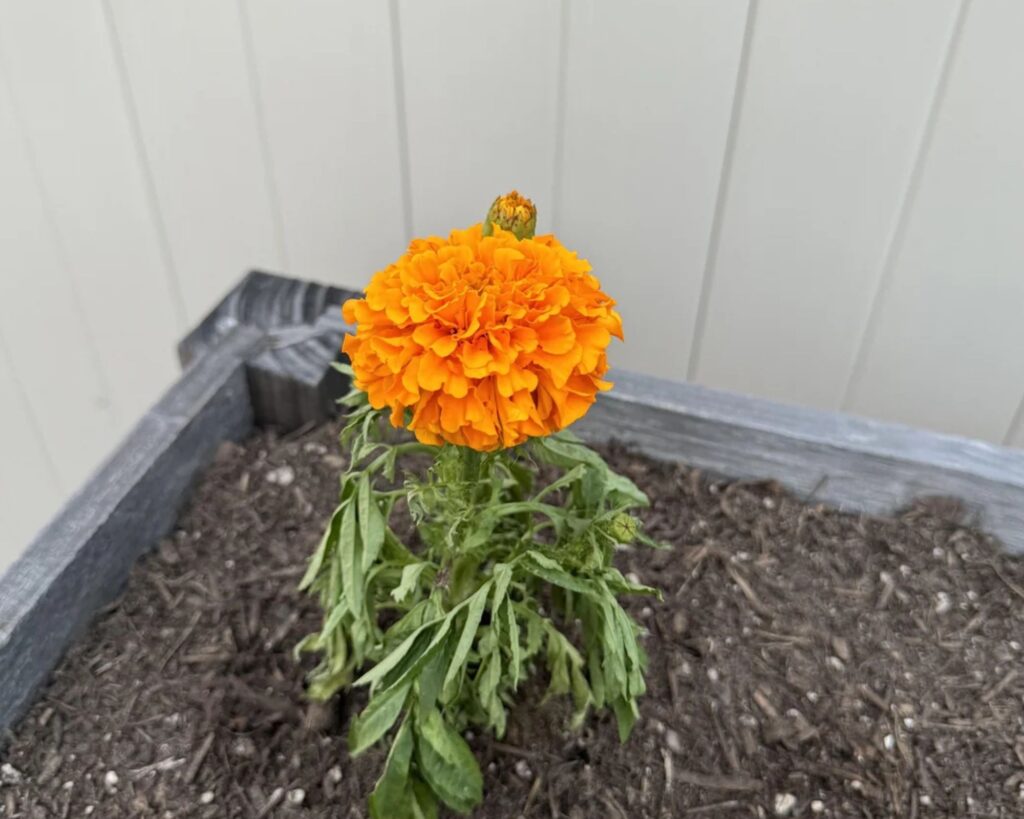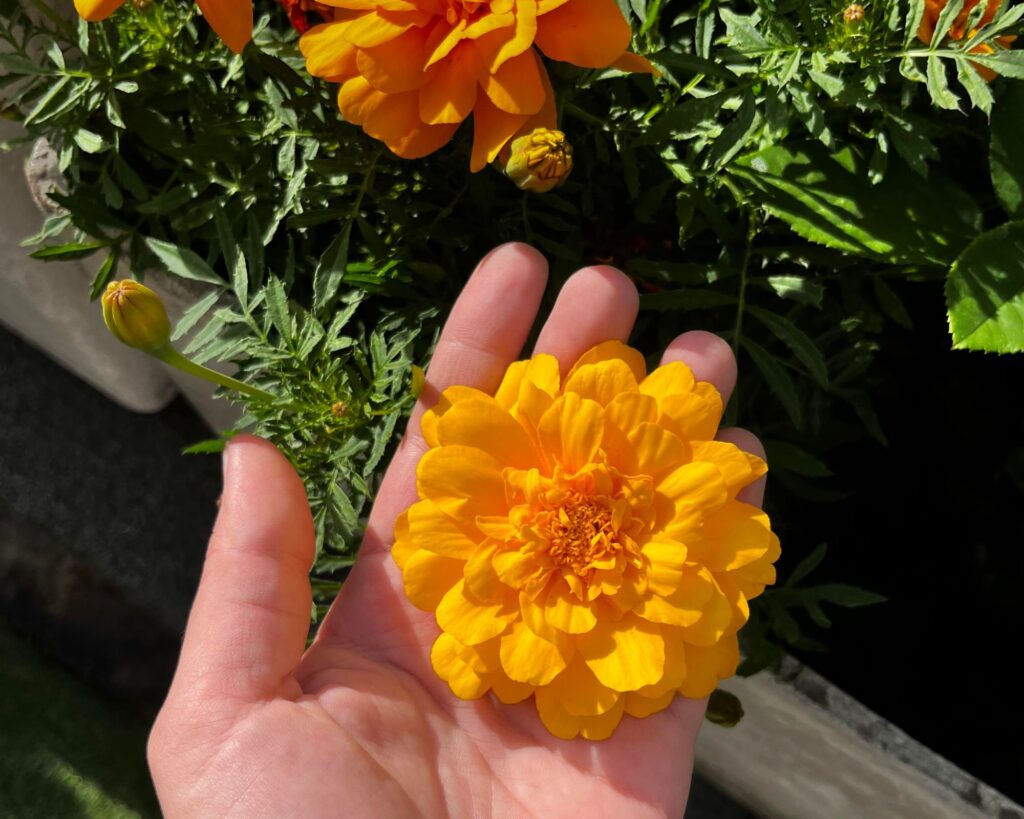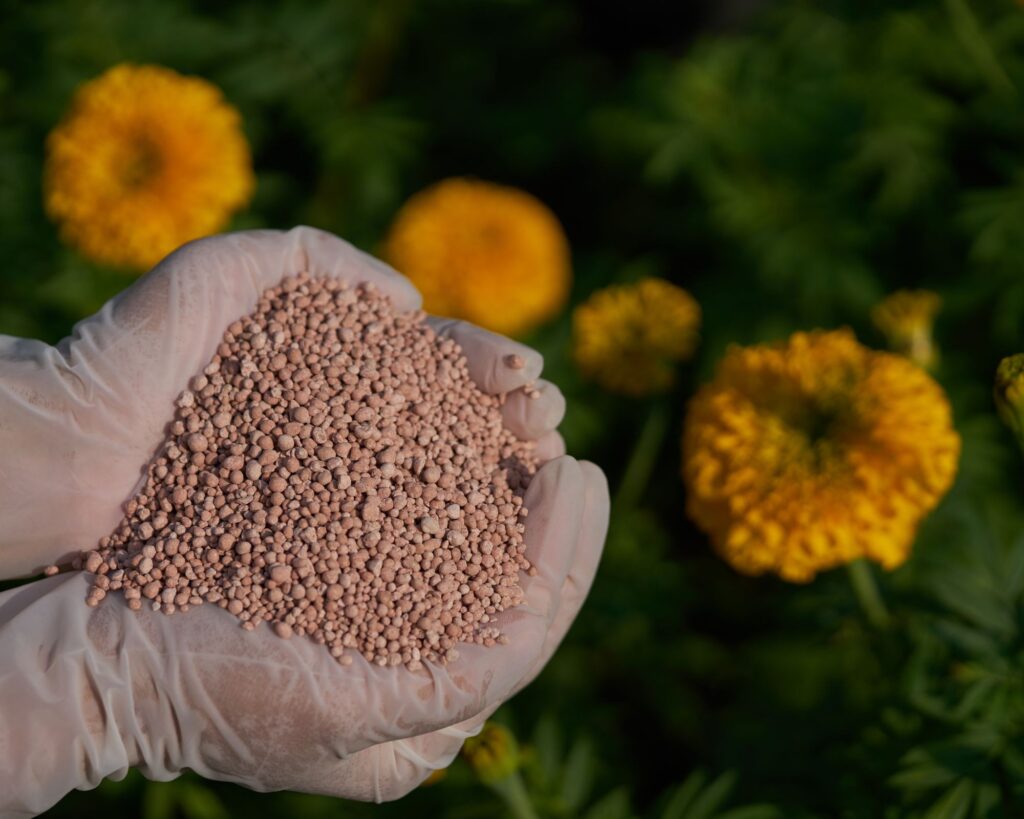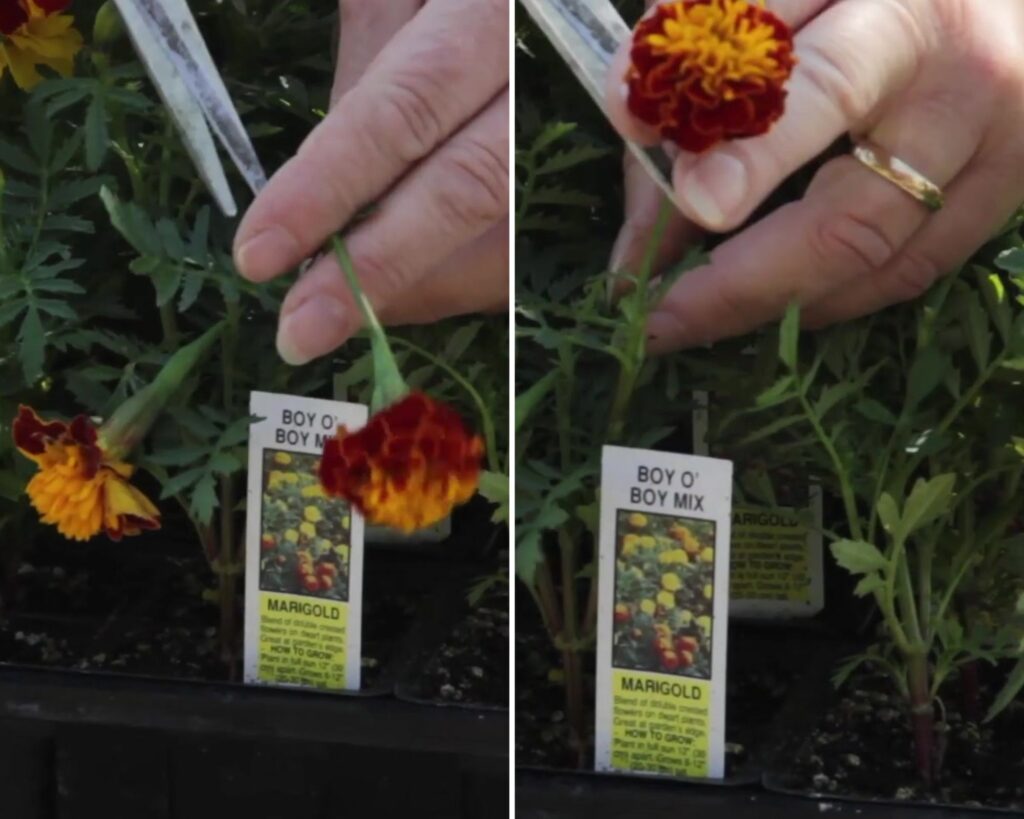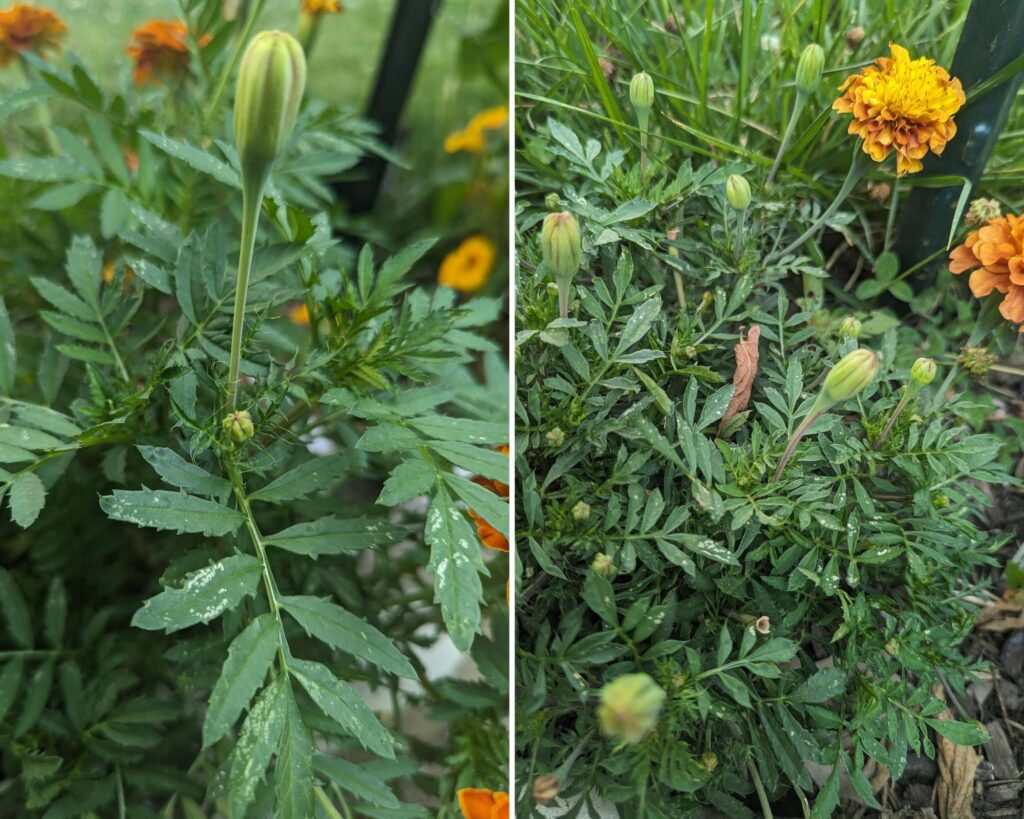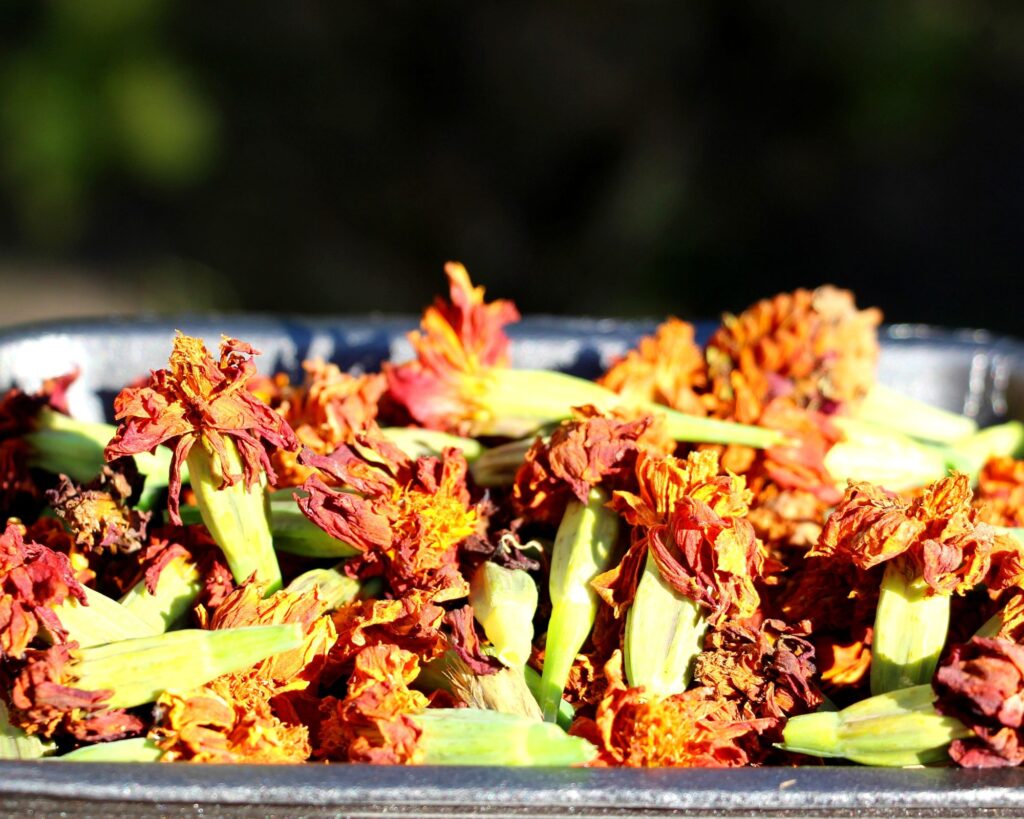Looking to transform your garden into a kaleidoscope of colors? Marigolds are the secret weapon you need! These vibrant flowers are not just stunning; they’re incredibly easy to grow, making them a gardener’s best friend.
Marigolds are the versatile champions of the flower world, perfect for any garden style – from elegant formal borders to relaxed, casual flower beds. Their resilience and natural pest-repelling qualities make them a practical choice, too.
Caring for marigolds couldn’t be simpler. With regular watering during dry spells and a bit of deadheading, these flowers will stay in peak condition, showcasing their radiant yellows, oranges, and reds.
Dive into the world of marigolds, and watch your garden transform into a vibrant paradise that will captivate your senses and reward your efforts.
Selecting Marigold Varieties
Successfully cultivating vibrant marigolds involves choosing the right variety, ensuring optimal soil conditions, and properly managing sunlight and watering needs.
When choosing marigold varieties, consider factors like flower size, color, and blooming period. African marigolds produce large blooms and are perfect for garden beds, while French marigolds are smaller, ideal for borders and containers.
Pay attention to whether you desire a longer bloom period or a particular aesthetic.
Tagetes patula (French marigold) offers rich colors, whereas Tagetes erecta (African marigold) provides large, striking blooms.
Select based on your garden’s theme and the specific climate and soil conditions.
Understanding Soil Requirements
Marigolds thrive in well-drained, fertile soil with a pH between 6.0 and 7.0. Add organic matter like compost to enrich your soil if needed. They perform well in sand, loam, and slightly clay soils, provided they drain well.
Before planting, till the soil to a depth of about 6-8 inches. This helps ensure the roots can expand easily. Ensure that any compacted soil is loosened, and check that it doesn’t retain too much moisture, which can cause root rot.
Sunlight and Watering Needs
Marigolds need full sunlight to produce vibrant flowers. Place them in a location where they receive at least 6-8 hours of direct sunlight daily. This exposure helps the plants develop strong stems and abundant blooms.
Water marigolds deeply but allow the soil to dry out between watering sessions. Over-watering can lead to fungal issues, so aim for the soil to be moist but not soggy. Mulching around the base of the plants can help retain moisture while keeping weeds at bay.
Choosing the Right Time to Plant
Marigolds are easy to grow, but the timing, seed choice, and planting methods are crucial for success. Follow these steps to ensure healthy and vibrant blooms. Choose a planting time after the last frost in spring.
Marigolds love warm weather and struggle in the cold. Typically, late April to early May is ideal for most regions. The soil temperature should be consistently above 60°F (15°C) for optimal growth.
Check local frost dates to avoid planting too early. In warmer climates, you can plant marigolds almost year-round. These flowers thrive in full sunlight, so pick a sunny spot.
You can plant marigolds from seeds or seedlings.
Seeds: Sow them directly into the garden bed. This method requires patience as seedlings take a few weeks to appear.
Seedlings: Available at garden centers, seedlings offer a head start. These young plants reduce germination time and establish quickly. Whether you choose seeds or seedlings depends on your preference for convenience or cost savings.
Spacing and Depth Guidelines
Proper spacing and depth are vital for healthy marigolds.
Seeds: Plant seeds about 1/4 inch deep. Space them out roughly 1-2 inches apart initially. Once they sprout and grow a few inches tall, thin them to about 8-10 inches apart. This distance ensures each plant receives adequate nutrients and light.
Seedlings: Space seedlings 8-10 inches apart for smaller varieties and up to 12 inches apart for larger ones. Gently firm the soil around them and water immediately after planting.
Fertilizing for Optimal Growth
Caring for marigolds involves regular fertilizing, pruning, and managing pests and diseases to ensure vibrant blooms and healthy growth.
Marigolds benefit from regular feeding to maintain their bright flowers and robust foliage. Use a balanced, water-soluble fertilizer such as a 10-10-10 formulation.
Apply fertilizer every 4-6 weeks during the growing season. Over-fertilizing can lead to lush foliage at the expense of blooms.
Steps for fertilizing:
- Mix the fertilizer as per instructions.
- Water the plants before applying.
- Apply fertilizer evenly around the base.
- Avoid getting fertilizer on leaves to prevent burn.
Organic options like compost or well-rotted manure can also be beneficial.
Pruning and Deadheading
Regular pruning and deadheading promote continuous blooming and a tidy appearance. Deadheading, or removing spent flowers, encourages the plant to produce more buds.
Pinch off the old flower heads just above the first set of leaves below the spent flower.
Pruning instructions:
- Use clean, sharp scissors or pruning shears.
- Trim back any leggy or overgrown stems.
- Remove any yellowing or dead leaves to maintain plant health.
- Periodically shape the plant to manage its size and encourage bushiness.
Pest and Disease Management
Marigolds can be susceptible to pests and diseases like aphids, spider mites, and fungal infections. Preventive measures include keeping the garden clean and removing any plant debris.
Pest control tips:
- Aphids: Spray with a mild solution of water and dish soap.
- Spider mites: Use insecticidal soap or neem oil.
- Fungal infections: Ensure good air circulation, avoid overhead watering, and remove affected parts.
Natural predators: Encourage ladybugs and lacewings, both of which feed on common pests.
Common issues to watch for:
- Powdery mildew: White powdery spots on leaves.
- Root rot: Ensure well-draining soil to prevent this condition.
Encouraging Bountiful Blooms
To encourage a profusion of marigold flowers, it’s crucial to focus on both promoting initial flowering and extending the blooming season. By managing these key aspects, you can enjoy vibrant, colorful marigolds throughout the growing period.
Ensure your marigolds receive plenty of sunlight. They thrive best in full sun, which means at least six hours of direct sunlight daily.
Use well-drained soil enriched with organic matter like compost. Regularly deadhead faded flowers to stimulate new blooms.
Water the plants adequately, ensuring the soil remains moist but not waterlogged. Fertilize with a balanced fertilizer every 4-6 weeks to provide essential nutrients. Control pests, such as aphids and spider mites, to prevent damage to your plants.
Extending the Blooming Season
To prolong the blooming period, continue regular deadheading and feeding routines.
Pinch back the tips of taller marigold varieties to promote bushier growth and more flowers. Monitor the soil’s moisture levels, especially during hot weather, to prevent stress on the plants.
Consider planting marigolds in succession every 2-3 weeks during the growing season. Avoid overcrowding the plants, as good air circulation helps to prevent diseases like powdery mildew that can shorten the blooming season.
Cutting Flowers for Arrangements
Marigolds can add vibrant color to your home and garden, and they offer practical benefits like seed collection for future planting.
Read on to discover the best ways to cut flowers for beautiful arrangements and how to collect and store seeds for next season.
Cutting marigolds for floral arrangements is best done in the early morning. Use a pair of sharp scissors or garden shears. Cut the stems at a 45-degree angle to allow maximum water absorption.
Make sure the vase is clean; bacteria can shorten the lifespan of your cut flowers.
Place the stems immediately in water to keep them fresh. Arrange them with other seasonal flowers or as standalone pieces. Change the water daily and trim the stems every few days to maximize the lifespan of your bouquet.
Collecting and Storing Seeds
Collecting marigold seeds is straightforward. Once the flowers have wilted and dried on the plant, they’re ready to harvest. Carefully pinch off the dried flower heads. Inside, you’ll find hundreds of thin, needle-like seeds.
Lay the seeds out to dry on a paper towel for a few days. Store them in a labeled, airtight container in a cool, dark place until it’s time to plant again. Avoid humidity, which can cause mold and ruin the seeds.
Properly stored marigold seeds can remain viable for several years, giving you an ongoing supply for future gardens.
By embracing the vibrant world of marigolds, you’re not just adding a splash of color to your garden – you’re investing in a versatile and resilient plant that rewards you with stunning blooms and practical benefits.
From selecting the right variety to understanding soil and sunlight needs, marigolds are both easy to grow and highly rewarding, making them ideal for any gardener.
Their ability to enhance various garden styles, paired with their pest-repelling qualities, ensures that marigolds are a valuable addition to any outdoor space.
As you dive deeper into the world of marigold cultivation, you’ll find that the process of planting, caring, and even harvesting these magnificent blooms is both enjoyable and fulfilling.
Your efforts will be richly rewarded with a stunning display of these magnificent flowers, making your garden the envy of the neighborhood. 😊



